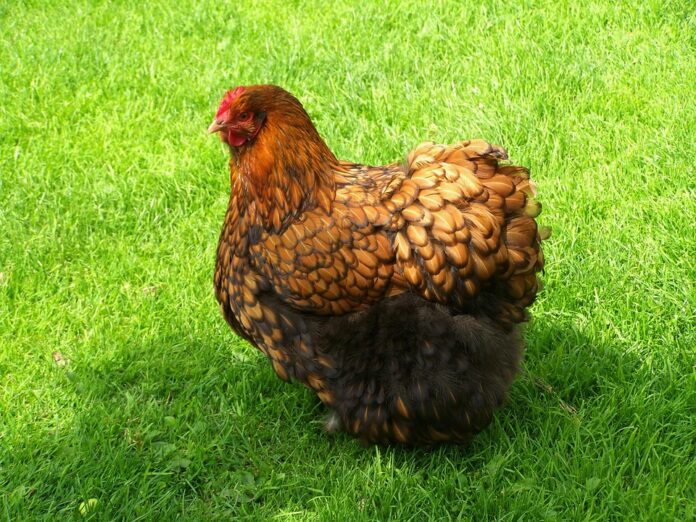Introduction
Poultry farming is an important sector of agriculture that provides a significant source of protein to the global population. However, poultry farming also generates a substantial amount of waste, including manure, feathers, and bedding materials. Proper management of poultry waste is essential to minimize environmental impact and ensure sustainable farming practices. In this report, we will explore the top 10 poultry waste management solutions for sustainable farming.
1. Composting
Composting is a popular method for managing poultry waste. By composting poultry litter, farmers can create a valuable organic fertilizer that can be used to improve soil health and fertility. Composting also helps to reduce the volume of waste and minimize odor issues.
Example:
A poultry farmer in Iowa implemented a composting system for managing chicken manure. By composting the manure, the farmer was able to reduce waste volume by 50% and produce high-quality compost for use on their crops.
2. Anaerobic Digestion
Anaerobic digestion is a biological process that breaks down organic matter in the absence of oxygen. This process can be used to convert poultry waste into biogas, a renewable energy source, and a nutrient-rich digestate that can be used as a fertilizer.
Financials:
Investing in an anaerobic digestion system can cost between $500,000 to $1 million, depending on the scale of the operation. However, the system can generate revenue through the sale of biogas and digestate.
3. Nutrient Management Planning
Nutrient management planning involves carefully monitoring and managing the application of poultry waste to land to prevent nutrient runoff and leaching. By developing a nutrient management plan, farmers can optimize the use of poultry waste as a fertilizer while minimizing environmental impact.
Data:
Studies have shown that implementing nutrient management planning can reduce nutrient runoff by up to 50% and improve soil health and crop yields.
4. Litter Amendments
Adding litter amendments such as lime or gypsum to poultry litter can help to reduce ammonia emissions, improve litter quality, and enhance nutrient availability for crops. Litter amendments can also help to control pathogens and pests in poultry houses.
Volumes:
Research has shown that adding gypsum to poultry litter can reduce ammonia emissions by up to 70% and improve litter quality for reuse as a bedding material.
5. Windrow Composting
Windrow composting involves piling poultry litter into long rows or windrows and turning the material regularly to promote decomposition. This method can help to break down poultry waste more quickly and efficiently than traditional static composting.
Example:
A poultry farm in California implemented windrow composting for managing turkey litter. By regularly turning the windrows, the farm was able to produce high-quality compost in just 3 months, reducing waste volume and odors.
6. Phytoremediation
Phytoremediation is a sustainable method for managing poultry waste that involves planting certain types of plants, such as willows or poplars, to absorb nutrients and contaminants from the soil. This method can help to reduce nutrient leaching and improve soil quality.
Scenarios:
A poultry farm in Maryland planted willow trees in a riparian buffer zone to absorb nutrients from runoff water. The willow trees helped to reduce nutrient loading in the waterways and improve water quality downstream.
7. Insect-based Waste Management
Using insects such as black soldier flies to process poultry waste can help to reduce waste volume, control odor, and produce high-quality protein-rich feed for poultry. Insect-based waste management systems can also be a sustainable alternative to traditional waste treatment methods.
Financials:
Implementing an insect-based waste management system can cost between $10,000 to $50,000, depending on the scale of the operation. However, the system can generate revenue through the sale of insect protein and reduce waste disposal costs.
8. Vermicomposting
Vermicomposting is a process that uses earthworms to break down organic matter, including poultry waste, into nutrient-rich vermicompost. Vermicompost can be used as a soil amendment to improve soil health and fertility.
Data:
Studies have shown that vermicomposting poultry manure can reduce pathogens in the compost by up to 90% and increase nutrient availability for plants.
9. Gasification
Gasification is a thermochemical process that converts organic materials, such as poultry waste, into syngas, a mixture of hydrogen and carbon monoxide. Syngas can be used as a renewable energy source for heat and power generation.
Financials:
Investing in a gasification system for poultry waste can cost between $100,000 to $500,000, depending on the scale of the operation. However, the system can generate revenue through the sale of syngas and reduce energy costs.
10. Water Recycling
Water recycling systems can be used to treat wastewater from poultry operations, such as cleaning water and manure lagoons, to produce clean water for reuse on the farm. Water recycling can help to conserve water resources and reduce nutrient runoff into waterways.
Examples:
A poultry farm in Georgia implemented a water recycling system to treat wastewater from their processing plant. The system helped to reduce water usage by 50% and improve water quality in the surrounding environment.
[Read More: Global Poultry Industry Report 2025: Trends, Challenges, and Future Outlook Across the Value Chain]




